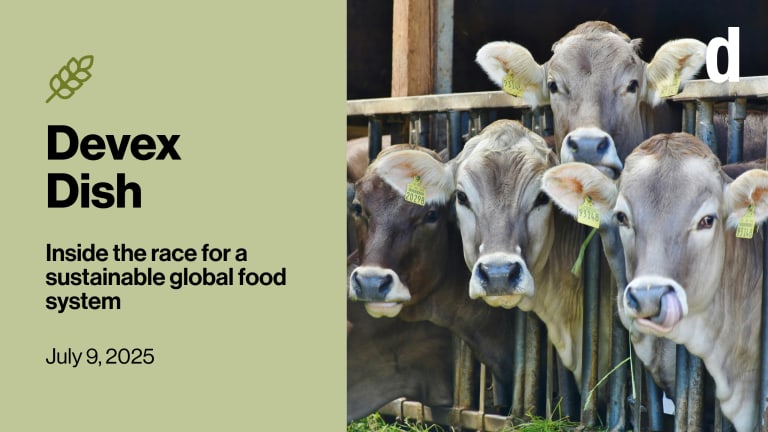
On Sept. 9, New York declared a state of emergency after detecting polio in wastewater samples from the New York City area. This comes five months into the monkeypox outbreak and two and a half years after the World Health Organization declared COVID-19 a global pandemic.
People are concerned and confused. They also have doubts about the public health system’s ability to combat these risks in a timely and effective manner.
Part of the reason is that we seem to be continually surprised when new pathogens emerge, or known pathogens mutate and spread differently. We lack the information to react quickly and protect ourselves against diseases. And with increasing signs of global climate change, there promises to be even more pathogens of pandemic potential introduced into communities across the globe.
Fortunately, there are solutions for proactive global pathogen surveillance.
A critical tool for disease prevention and control
We already have the tools and technology to identify fast-spreading, fast-mutating viruses with sufficient time to minimize harm. Genomic surveillance, which is becoming more powerful and accessible each day, enables us to track diseases at a global scale. Since 2008, the cost of human DNA sequencing has declined faster than predicted. Cost is no longer the major barrier to genomic-based disease surveillance.
By continuously monitoring the genetic similarities and differences of bacteria, viruses, and parasites, we can more quickly identify changes in their genomes to understand how they spread and how harmful they might be. This information also enables us to better customize public health responses and develop countermeasures, such as rapidly deployed vaccines or repurposed treatments to slow or stop the spread of disease and decrease morbidity and mortality in those infected.
We can only see what we sequence, so we need to prioritize and incentivize rapid, global data-sharing.
—We can’t predict where or how the next pathogen will emerge — but we can spot it sooner, giving our public health systems more time to inform and protect us.
In addition to this technology, we also have broad support for implementing a global biosurveillance system.
This summer, when declaring the monkeypox outbreak a public health emergency of international concern, WHO Director-General Dr. Tedros Adhanom Ghebreyesus recommended genomic surveillance as a critical tool in response to the outbreak.
Earlier this month, WHO and Germany launched the WHO Hub for Pandemic and Epidemic Intelligence, which will focus on “the ability to better detect and assess risks of disease events in their earliest stages before they amplify and cause death and society disruption.”
Most recently, the U.S. Biden-Harris administration released a White House plan for pandemic preparedness that will strengthen early warning systems “to detect new threats — as well as old threats like Polio — by genome sequencing, wastewater samplings, and stronger global early warning networks to aggregate and analyze pathogen data.”
Philanthropic organizations, like The Rockefeller Foundation’s Pandemic Prevention Institute, also recognize that genomic sequencing provides scientists with a full picture of variants. It allows them to share essential data globally to compare with an array of other collected genomes and analyze variant virus behaviors based on mutations.
But the public sector cannot do this alone.
Establishing a network
To establish and operate what I call our Global Pathogen Surveillance Network, we need to combine the strengths of the health authorities like the U.S. Centers for Disease Control and Prevention and WHO, health systems, the defense sector, and the private sector, which brings critical capabilities and resources to the table.
This network would sequence samples from global populations on a regular basis, while also safeguarding their privacy. This occurs today in pockets around the globe, but by making this information more widely available and shared, we would exponentially increase our ability to prevent and fight the spread of diseases. By having such comprehensive global surveillance, health authorities could more efficiently prioritize the availability and quantity of existing vaccines stored and ready for use, and support the proactive development of novel vaccines when required.
It is true that the COVID-19 pandemic exposed the weaknesses of our global health system, but it also accelerated to the global genomic era.
According to WHO, the share of countries equipped with genomic surveillance capabilities increased by more than 25% between March 2021 and January 2022. This is an exciting and important development, but we must build on this momentum and bring this critical capacity to every country. Genomic blind spots will enable viruses to evolve unseen.
We must also create incentives for every country to share their data openly and rapidly, without fear that it will pose a threat to their economies or health systems.
A critical way to detect and contain future outbreaks is to know what is happening around the world — the way we track storms on a weather map — and the adoption of widespread sequencing enables us to do just that.
We can only see what we sequence, so we need to prioritize and incentivize rapid, global data-sharing. We have the tools and knowledge to accomplish this today.
And while we might not be able to prevent the next outbreak, we can help prevent the next global pandemic.








